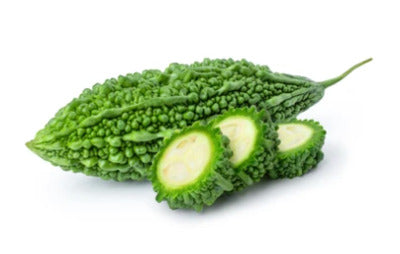
Dharaseeds
Bitter gourd-Chintu
Estimated delivery between April 15 and April 18.
Compact and High-Yielding Variety for Small Spaces
The Chintu Bitter Gourd is a compact and early-maturing variety, ideal for small spaces and urban gardens. It produces small to medium-sized fruits that are less bitter than other varieties, making them suitable for a wide range of culinary uses. This variety is favored for its consistent yields and resilience, making it a great option for home gardeners looking to grow healthy, nutritious bitter gourd in limited space.
Key Benefits
- Compact Growth: The Chintu variety is more compact compared to other bitter gourd types, making it perfect for small gardens, balconies, or container gardening.
- Early Maturity: Chintu bitter gourd matures in about 55-70 days, providing an early harvest compared to other varieties.
- Mildly Bitter: This variety has a milder bitterness, making it easier to incorporate into various dishes, such as stir-fries, curries, and juices.
- Nutrient-Rich: Like all bitter gourds, it is a rich source of Vitamin C, fiber, and iron, supporting immune health and digestive function.
- High Yielding: Despite its compact size, Chintu produces a high yield of fruits throughout the growing season, ensuring consistent harvests.
Planting Instructions
Planting Season
- Bitter Gourd Chintu is best planted when the temperature is consistently above 70°F (21°C). The warm months of spring to summer are ideal, though it can also be grown year-round in tropical climates.
Planting Details
- Seed Depth: Plant seeds 1 inch deep in the soil.
- Spacing: If growing in containers, space the plants at least 12 inches apart. For in-ground planting, space plants around 18 inches apart.
- Sunlight: Chintu bitter gourd needs full sun. Ensure it receives 6-8 hours of direct sunlight daily for healthy growth.
Care Instructions
Watering
- Bitter gourd thrives in moist, well-drained soil. Keep the soil consistently moist, but be sure to avoid waterlogging.
- Water regularly, especially during dry spells, but always let the soil dry slightly between waterings to prevent root rot.
Fertilizing
- Start with well-rotted compost or organic manure before planting to enrich the soil.
- Use a balanced fertilizer with higher levels of phosphorus during the early stages of growth to encourage strong root and vine development.
- During the fruiting stage, switch to a potassium-rich fertilizer to promote better fruit production.
Vine Support
- Chintu bitter gourd is a climbing vine. Provide a trellis or support to allow the vine to grow vertically. This will help reduce space usage and keep the fruit off the ground, preventing rot.
Pest and Disease Management
- Keep an eye on common pests like aphids, whiteflies, and caterpillars. Regularly inspect the plant and apply organic pest control methods such as neem oil or insecticidal soap.
- Ensure proper spacing to allow for good air circulation and reduce the likelihood of fungal diseases.
Harvesting
- Chintu bitter gourd is typically ready for harvest within 55-70 days from sowing.
- Harvest the fruits when they are still green and firm. The fruit should not yet be yellow or overly mature to avoid bitterness.
- For the best flavor, harvest the gourd when it is still small to medium-sized. Use a sharp knife or scissors to cut the fruit from the vine.
Additional Notes
- Mild Taste: Chintu bitter gourd is less bitter compared to many other varieties, making it easier to incorporate into various dishes. However, soaking it in saltwater before cooking can further reduce bitterness.
- Soil Requirements: It grows best in well-draining, slightly acidic to neutral soil (pH 6-7).
- Container Gardening: This variety is well-suited for container gardening due to its compact nature. Ensure the container has proper drainage and provide a tall enough trellis or stake for the plant to climb.
The Chintu Bitter Gourd is a great option for home gardeners with limited space. Its early harvest, compact growth, and mild bitterness make it a versatile and productive vegetable, perfect for urban or small-space gardening.









